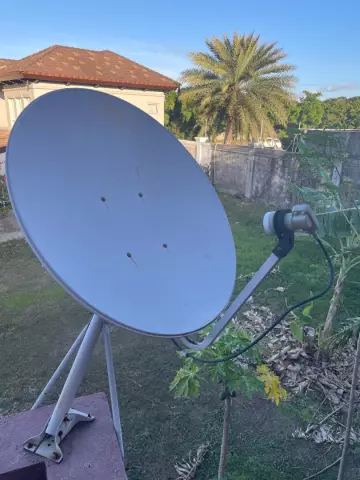If there is only one satellite dish and two televisions, you can make them work from one "dish". But you will either have to use two receivers, or accept the impossibility of watching one satellite channel on one TV and another on the other.
Instructions
Step 1
Use receivers to connect two TVs. If one of the receivers has not only an input, but also an output antenna jack (do not confuse it with the modulator jack for connecting to a TV at high frequency), connect this jack with a cable certified for connecting satellite dishes with receivers to the input jack of the second receiver. You will get the following chain: converter - first receiver - second receiver. Please note that if you receive encrypted channels, you will have to purchase two cards and pay a monthly fee for each of them. Also, you can not watch on one receiver channels that require vertical polarization, and on the other - requiring horizontal.
Step 2
You can use a splitter that is also certified for use with satellite receivers and converters. An ordinary TV will not work - it does not pass the supply voltage required by the converter, as well as the polarization switching voltage. This option imposes the same restrictions as the previous one. And since you need additional equipment, use it if none of the receivers have an output jack for connecting a second unit.
Step 3
Install two converters on the antenna, and you can connect one of them to one receiver and the other to the other. You can use them independently, but it is impossible to direct both converters to the same satellite. We'll have to watch channels from one satellite on one TV, and from another on another. Cards, if the channels are encrypted, will also require two, and you will have to pay a subscription fee for both.
Step 4
The next connection method is to use a converter with two outputs. One of them allows you to receive only channels with horizontal polarization, the second - only with vertical polarization. Connect both outputs of the converter to a device called a multiswitch. And to multiswitch - from one to three receivers with TVs. From any of them it will be possible to independently watch channels broadcasting in any polarization - all the necessary switching will be automatically done by a multiswitch. But you will still need as many cards to receive coded channels as there are receivers, and you will have to pay for each of them.
Step 5
In case you want to get by with one receiver and one card, and the receiver is equipped with a high-frequency modulator, connect the output of this modulator to two TVs through a splitter designed for terrestrial antennas. Tune both TVs to the channel broadcast by the modulator. But now, if you switch the received channel on the receiver, it will simultaneously change on both TVs.
Step 6
You can also connect one TV at a low frequency (via RCA or SCART connectors), and the second at a high frequency via a modulator. The result will be the same, but on the first of the TVs it will also be possible to independently receive terrestrial TV channels by connecting an indoor or outdoor antenna to it. And if you connect one TV to the receiver via SCART, and the second via RCA, then you can connect antennas for receiving terrestrial TV channels to both devices.






